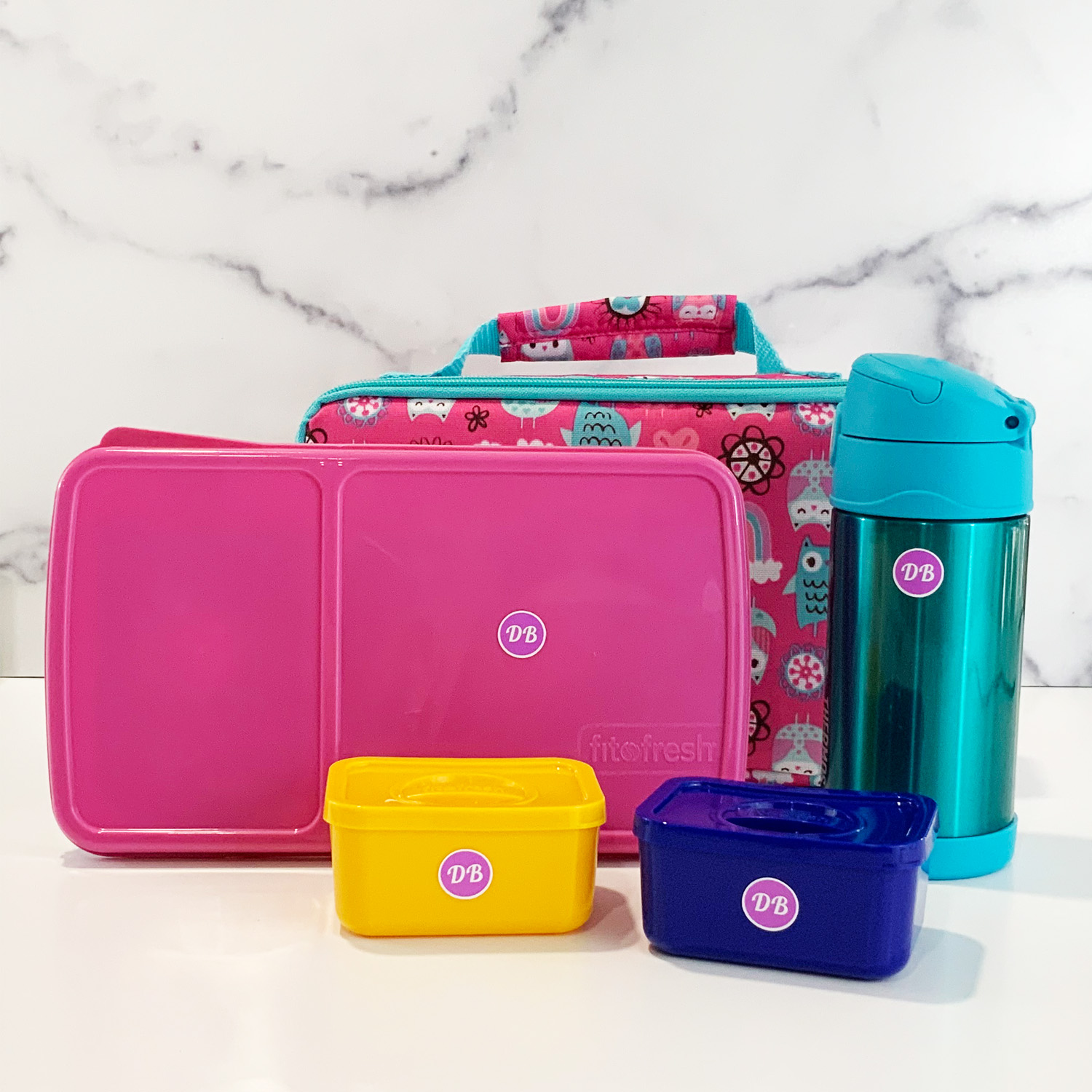If you've ever wondered why your bright, capable child can remember every detail about their favorite video game but somehow loses their jacket three times a week, you're not alone. As a mom of three boys—I've lived through countless "lost item" moments that left me questioning whether my kids were just being careless. The truth? It's not carelessness at all. It's science.
The Real Reason Your Child Loses Everything
Before we dive into solutions, let's address the elephant in the room: your child isn't losing things because they don't care or because they're irresponsible. According to child development research from Harvard's Center on the Developing Child, children's brains are literally wired differently than adult brains, and this affects how they manage belongings.
The Science Behind Lost Items:
Executive Function Development is the key to understanding why kids lose things. Executive function acts like an "air traffic control system" for the brain, helping with focus, holding information, filtering distractions, and switching between tasks. Here's the crucial part: this system doesn't fully mature until around age 25.
What This Means for Your Child:
- Working Memory Limitations: Children under 10 have limited capacity to hold multiple pieces of information in their minds simultaneously
- Attention Regulation: Their brains prioritize immediate, interesting experiences over future planning
- Object Tracking: The ability to mentally track multiple belongings while focusing on other tasks is still developing
- Routine Formation: Creating and maintaining organizational habits requires executive skills that are still building
Executive Function: The Missing Piece of the Puzzle
Research from the National Institutes of Health shows that executive function skills develop in predictable stages, and understanding these stages helps explain why certain ages seem particularly challenging for keeping track of belongings.
The Three Core Executive Functions:
- Working Memory: Holding information in mind while using it
- Flexible Thinking: Switching focus and adapting to new situations
- Inhibitory Control: Resisting impulses and staying focused
How These Affect Lost Items:
- Working Memory: Your child might remember to grab their backpack but forget their lunch box because their brain can only hold so much information at once
- Flexible Thinking: When something unexpected happens (like a fire drill), they struggle to adapt their routine and forget belongings
- Inhibitory Control: They see something interesting and impulsively follow that interest, leaving their jacket behind
Age-by-Age Development: What to Expect When
Understanding typical development helps set realistic expectations and reduces parent frustration.
Ages 3-5: The Foundation Years
What's Happening in Their Brain:
- Basic executive functions are just beginning to emerge
- Attention spans are naturally short (3-5 minutes per year of age)
- They live completely in the present moment
What This Looks Like:
- Forgetting toys immediately after putting them down
- Needing constant reminders about belongings
- Getting distracted and walking away from items
Parent Strategy: Focus on simple, consistent routines rather than expecting independence.
Ages 6-8: The School Transition
What's Happening in Their Brain:
- Executive functions are developing but still immature
- They can follow routines but struggle with unexpected changes
- Working memory is limited to 2-3 items
What This Looks Like:
- Losing school supplies frequently
- Forgetting jackets, lunch boxes, and backpacks
- Struggling in unstructured environments (playground, cafeteria)
Parent Strategy: Implement visual labeling systems and create predictable routines.
Ages 9-12: The Improvement Phase
What's Happening in Their Brain:
- Executive functions are strengthening significantly
- They can handle more complex organizational tasks
- Working memory expands to 4-5 items
What This Looks Like:
- Fewer lost items overall but still struggles during transitions
- Can remember belongings with systems in place
- Beginning to feel embarrassed about losing things
Parent Strategy: Teach organizational systems and gradually increase independence.
Ages 13+: The Refinement Years
What's Happening in Their Brain:
- Executive functions continue developing through age 25
- Hormonal changes can temporarily disrupt organization
- Increased social awareness motivates better habits
What This Looks Like:
- Generally better at tracking belongings
- May still struggle during stressful periods
- Can implement and maintain organizational systems
The Simple Fix: Systems That Work With Their Brain
The good news? Once you understand that losing things is developmental, not behavioral, you can implement systems that actually work with your child's developing brain instead of against it.
The Visual Memory Solution
Children's visual-spatial memory systems develop faster than their verbal memory systems. This means they're more likely to remember something they can see than something they just heard about.
How to Apply This:
- Use bright, colorful name labels on all belongings
- Create visual checklists with pictures
- Establish designated "homes" for important items
- Color-code items by child
Real Parent Success Story:
"After my 7-year-old lost his fourth water bottle, I started using bright blue waterproof labels with his name. Not only did he stop losing his bottle, but he started helping other kids find their labeled items too. The visual cue made all the difference!" - Jennifer, mom of two
The Routine Reduction Strategy
Children's brains can only handle so much cognitive load. The more decisions they have to make, the more likely they are to forget something.
How to Apply This:
- Create simple, consistent routines for arrival and departure
- Use school label packs to eliminate guesswork about ownership
- Establish the same "pack and check" routine every day
- Reduce the number of items they need to track
The Environmental Design Approach
Research shows that children perform better when their environment is designed to support success rather than requiring them to overcome challenges.
How to Apply This:
- Label everything with waterproof, durable labels that survive playground activities
- Create visual boundaries for personal space (labeled cubbies, hooks, etc.)
- Use containers and organizers that make belongings visible
- Implement clothing labels for playground items that frequently get mixed up
Why Labeling Is the Game-Changer
Teachers and child psychologists consistently report that labeled items are returned to their owners 90% more often than unlabeled items. But the benefits go beyond just getting things back.
The Psychology of Labeling:
- Ownership Recognition: Labels help children visually identify their belongings
- Responsibility Building: Seeing their name creates a sense of personal responsibility
- Cognitive Load Reduction: No mental energy wasted wondering "Is this mine?"
- Social Confidence: Children feel more confident in group settings when they can easily identify their items
Types of Labels That Work Best:
- Waterproof name labels for lunch boxes and water bottles
- Iron-on or stick-on clothing labels for jackets and uniforms
- Clear, durable labels for school supplies
- Color-coded systems for families with multiple children
The Lost Item Prevention System
Based on child development research and real parent experiences, here's a proven system that works:
Step 1: The Three-Item Rule
Children's working memory can reliably handle 3 items at elementary school age. Never ask them to remember more than 3 things at once.
Example:
Instead of: "Don't forget your backpack, lunch box, jacket, library book, and show-and-tell item"
Try: "Grab your three main things: backpack, lunch box, jacket"
Step 2: The Visual Check System
Create a visual checklist that children can use independently.
Morning Checklist:
- ✅ Backpack (with homework inside)
- ✅ Lunch box
- ✅ Jacket/sweater
Afternoon Checklist:
- ✅ Backpack
- ✅ Lunch box (even if empty)
- ✅ Jacket/sweater
- ✅ Any special items (library books, projects, etc.)
Step 3: The Strategic Labeling Approach
Label items strategically based on where they're most likely to be lost:
High-Loss Areas:
- Playground: Jackets, sweatshirts, hats
- Cafeteria: Lunch boxes, water bottles, utensils
- Classroom: Pencil cases, folders, library books
- Gym: Sneakers, water bottles, towels
Step 4: The Backup Plan
Even with the best systems, things will occasionally get lost. Prepare for this:
- Keep a backup set of essential items
- Teach children what to do when something goes missing
- Use emergency contact labels on important items
- Create a "lost and found" routine at home
Common Myths About Kids Losing Things
Myth #1: "They're just being careless"
Truth: Losing things is a normal part of brain development, not a character flaw.
Myth #2: "They'll grow out of it naturally"
Truth: While executive function improves with age, children need systems and support to develop good habits.
Myth #3: "Punishment will teach them to be more responsible"
Truth: Punishment adds stress, which actually makes executive function worse. Supportive systems work better.
Myth #4: "Smart kids shouldn't lose things"
Truth: Intelligence and executive function develop independently. Bright children can still struggle with organization.
Myth #5: "They lose things because they don't value them"
Truth: Children often lose their most treasured possessions because their brains prioritize immediate experiences over object tracking.
When to Seek Additional Support
While losing things is normal, some children may need extra support:
Consider Professional Help If:
- Lost items significantly impact daily functioning
- Your child seems unusually distressed about losing things
- Organizational challenges persist well beyond typical developmental timelines
- Lost items are accompanied by other attention or learning concerns
Types of Support Available:
- Occupational therapy for organizational skills
- Educational support for executive function development
- Counseling for anxiety related to losing things
- Medical evaluation if ADHD or other conditions are suspected
Success Stories: Real Families, Real Results
The Martinez Family:
"Our 8-year-old was losing something every single day. After implementing a color-coded labeling system and creating a simple three-item checklist, lost items dropped to maybe once a month. The visual cues made all the difference, and now he actually helps his little sister keep track of her things too."
The Johnson Family:
"I used to think my daughter was just scattered and irresponsible. Learning about executive function development changed everything. We started using waterproof labels on everything and created a 'launch pad' by the door with hooks for backpacks and jackets. She went from losing her jacket twice a week to not losing anything for three months straight."
The Chen Family:
"As a working parent, the constant texts from school about lost items were stressing me out. We invested in a complete labeling system and taught our son the 'pat down' routine before leaving any location. The peace of mind has been worth every penny."
The Bottom Line: It's Development, Not Defiance
Understanding the science behind why kids lose things transforms how we approach the problem. Instead of viewing lost items as behavioral issues requiring punishment, we can see them as developmental challenges requiring support.
Your Action Plan:
- Adjust your expectations based on your child's developmental stage
- Implement visual systems that work with their developing brain
- Invest in quality labeling systems that make ownership obvious
- Create consistent routines that reduce cognitive load
- Be patient with the process - executive function takes time to develop
Remember: Every child develops at their own pace. Some may master organizational skills earlier, while others need support well into their teens. The key is providing systems that set them up for success while their brains continue to mature.
The most important thing you can do is approach lost items with understanding rather than frustration. Your child isn't losing things on purpose - their brain is simply doing exactly what it's supposed to do at their developmental stage.
About the Author
As the founder of Sticky Monkey Labels and a mom of three boys—two with food allergies and one adopted with special needs—I've experienced firsthand the frustration and worry that comes with constantly lost belongings. After losing countless jackets, lunch boxes, and school supplies, I realized that the problem wasn't my children's carelessness—it was the lack of systems that worked with their developing brains. Every product we create is designed with real child development in mind, because I know that the right organizational tools don't just prevent lost items—they build confidence, reduce family stress, and support children's natural development.
Ready to end the lost item cycle? Explore our complete labeling systems designed specifically to work with children's developing brains.




